Solar-powered water breeds life in the Turkmenistan desert
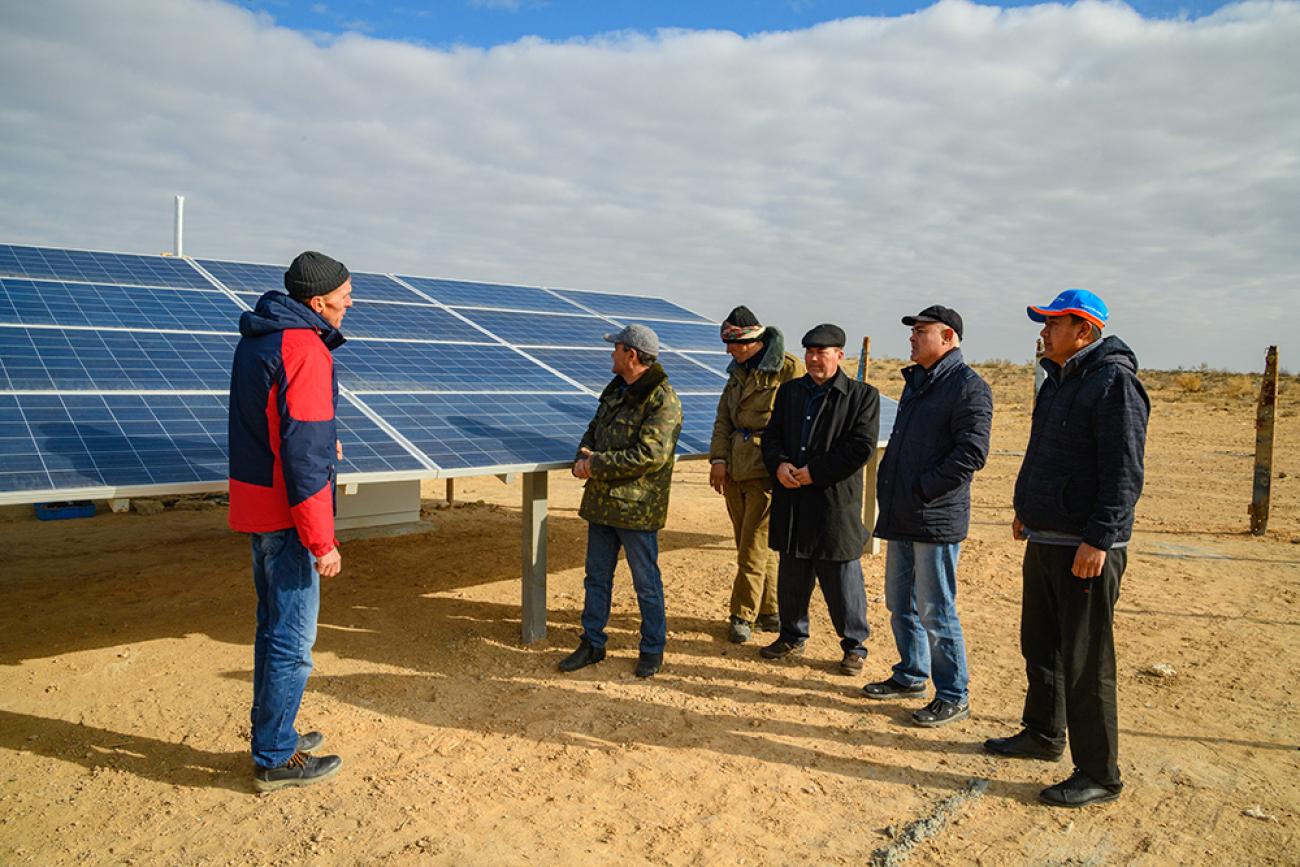
The slightest streak of pink runs through the sky as day breaks over Turkmenistan’s Garagum desert.
Some 120 km away from the nearest town, the site of Esenaman prepares to receive an important visitor. For the longest time, things have been quiet in these parts, but now, change is on its way.
A journey to the past
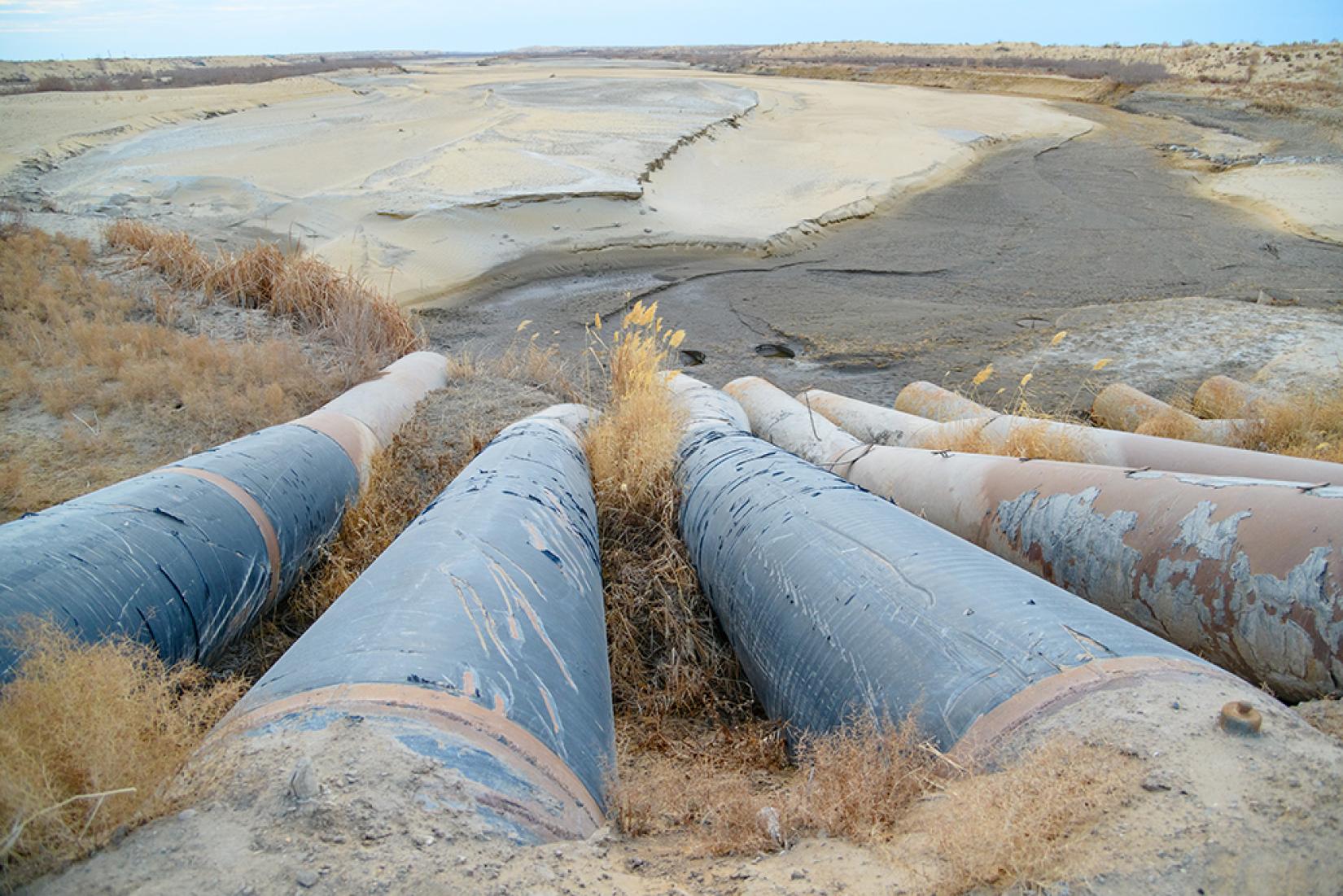
Esenaman once used to be one of the major watering spots for the Garagum livestock; one of Turkmenistan’s most lucrative economic sectors. Now, all that the rusty steel pipes leading into the reservoir of water serve as is a reminder of its past.
The gradual demise of Esenaman has a lot to do with the destruction of the sardobs. Sardobs are traditional water reservoirs that are built on pastures in the dessert. They collect and store water that is later pumped out for the livestock to drink and bathe in.
However, owing to harsh weather conditions prevalent since 1995 — very little to no rain — the sardobs began to dry up. Without any water for their cattle and sheep, herders began to move away from Esenaman, and relocated their herds to neighboring areas in search of greener pastures.
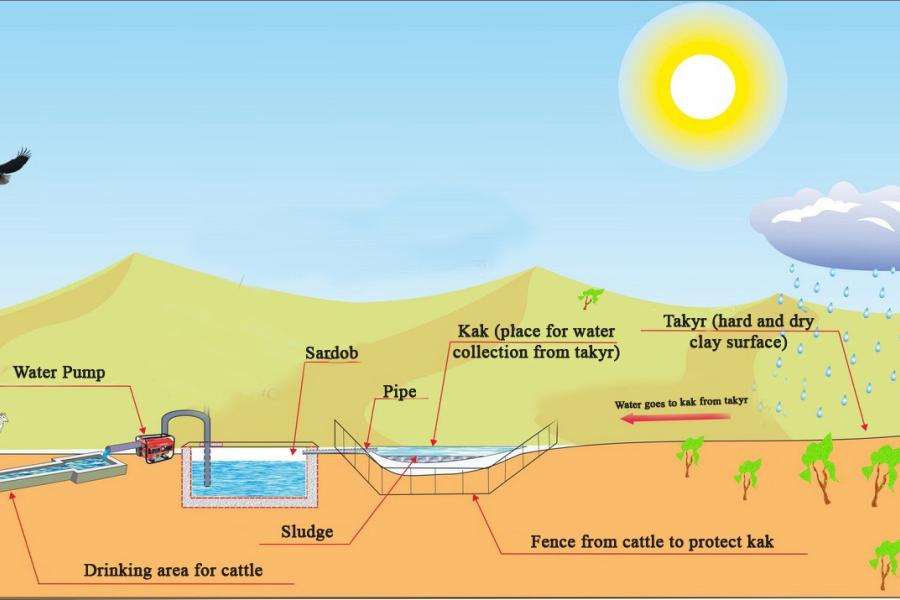
Water scarcity and increased competition for food led to a sharp decrease in the size and quality of the livestock. Increased pressures on these pastures accelerated desertification in these neighboring towns.
The now abandoned Esenaman faced even more neglect. Pastures faded and dried up, local houses for shepherds began to crack and crumble, and overall, the area became the face of desolation. No longer fit for cattle breeding, Esenaman was forgotten for a while.
In 2019, climatic conditions improved when the country experienced a generous amount of rain. By that time, however, the sardobs had decayed and deteriorated to such an extent that now water accumulation, not scarcity, was the problem.
With a break in the drought, so to speak, it was finally time to revisit Esenaman, and coax it back to life.
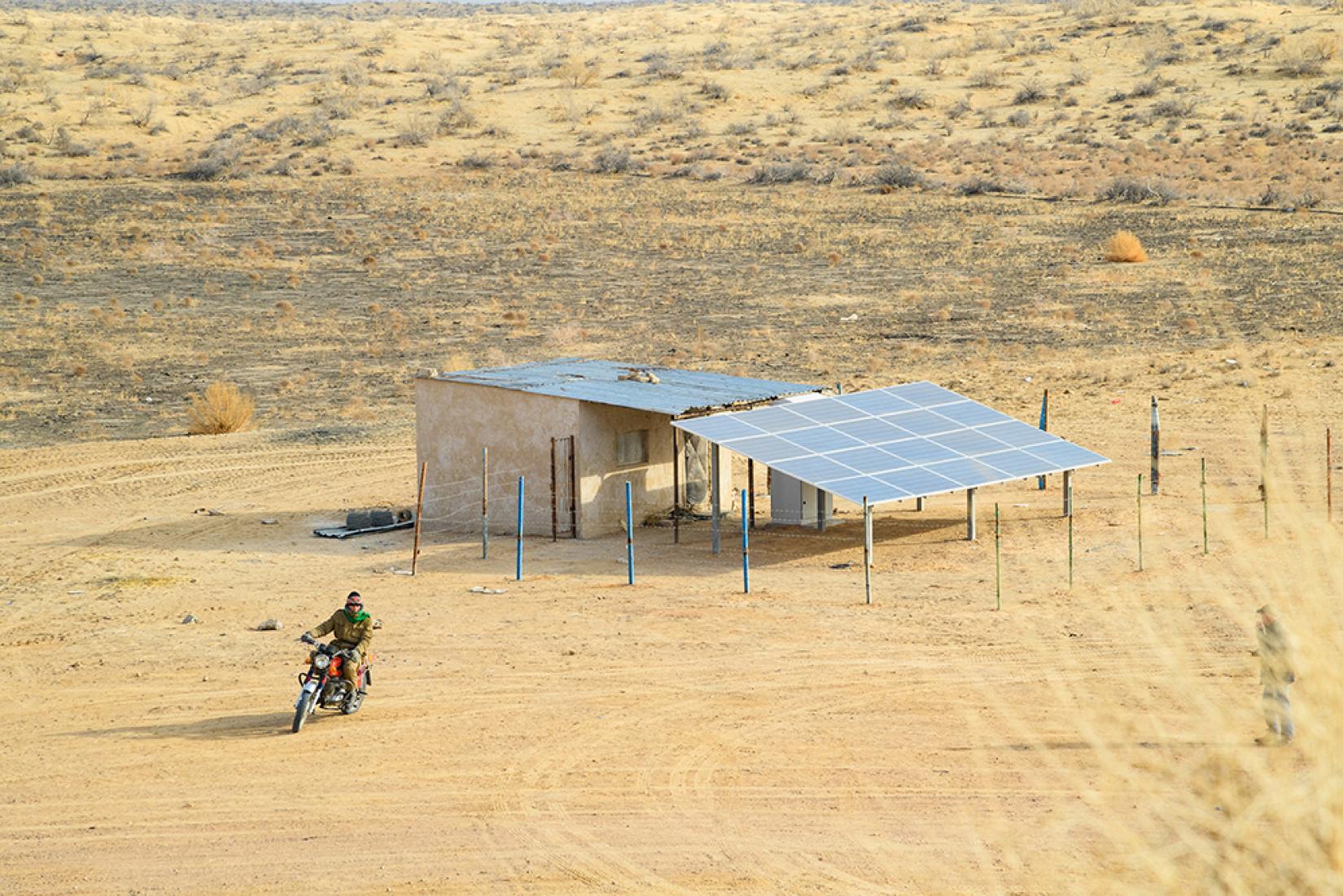
The stillness of the dessert is broken by the sound of a motorbike approaching. A man dressed in all khaki, except for his colorful scarves, gets off the bike and walks towards an ordinary building. Yagmur Kakayev, a local shepherd, has seen Esenaman through its stages of abandon and decay and is now here to witness its rebirth. But the building is not so ordinary: it houses Esenaman’s new solar panels, the latest in a series of proposed innovative solutions for the restoration of the watering site.
The idea is to introduce solar powered water pumps, that will not only free the site from any dependence on electricity, nearly impossible to get in the middle of the dessert, but to also help reintroduce Esenaman as a prime watering spot.
This has the added benefit of reducing pressure on the surrounding pasture sites, which have graciously been lending their pastures to the livestock of Esenaman for the past years. It is estimated that within three or four years of Esenaman running properly, not only will the size of the herds increase, but the vegetation lost in the other grazing sites can also be recovered.
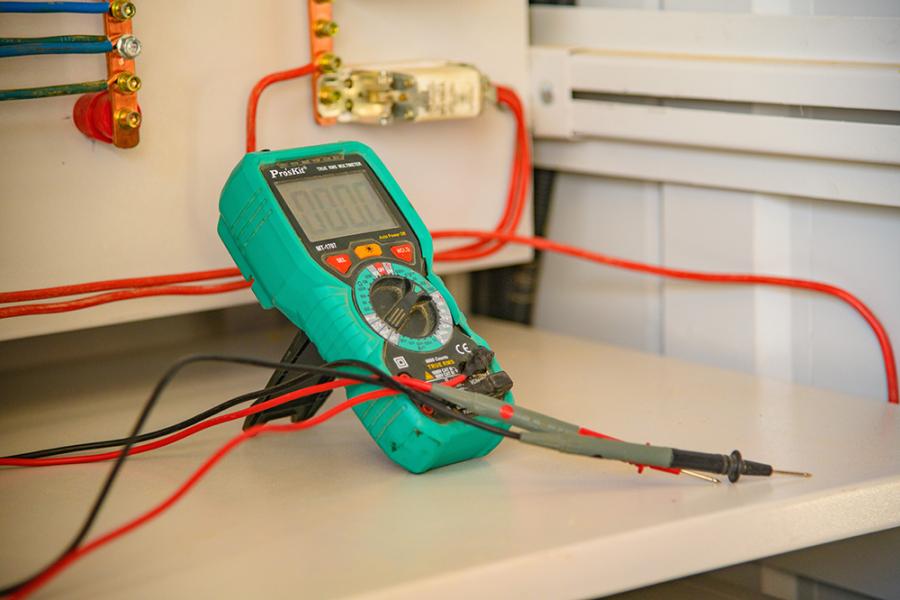
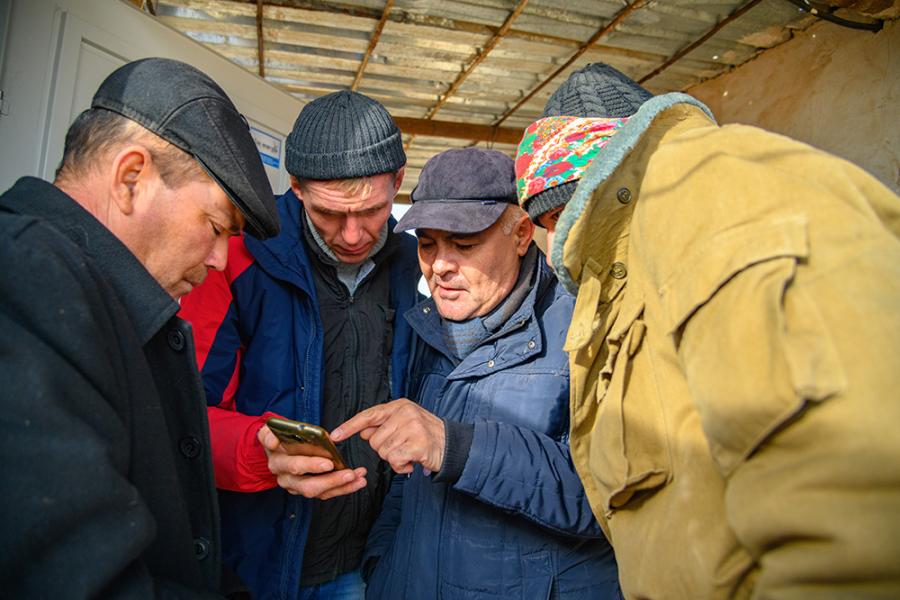
Yagmur, who will guard the site, is joined by a technician sent by Taze Energy, the company installing and operating the solar panels, as well as Saparmurat Muhanov, one of the local cattle farmers who are being trained to maintain the panels.
In addition to the solar panels, the damaged sardobs were also reconstructed and fenced, in a bid to prevent future damage by wayward animals. Brand new drinking bowls have also been set up for the animals. Now it’s time for them to shift back to Esenaman.
What about the future?
UNDP Turkmenistan has been working on adapting to climate change in the desert and is the first to pilot other solar solutions, but this GEF project is the first experience working closely with cattle breeders. In a place where there are few options of employment, finding ways to limit the impact of local meat production on the environment is the only way to make this important industry a sustainable one.
Having a local partner who directly benefits from the work means getting valuable input and paying better attention to maintenance of the facilities.
What does the future hold for Esenaman? For starters, with a renewed source of water, there are plans to increase the vegetation in the area. The existing shepherd houses are being repaired so that the shepherds can live on site during the breeding season.
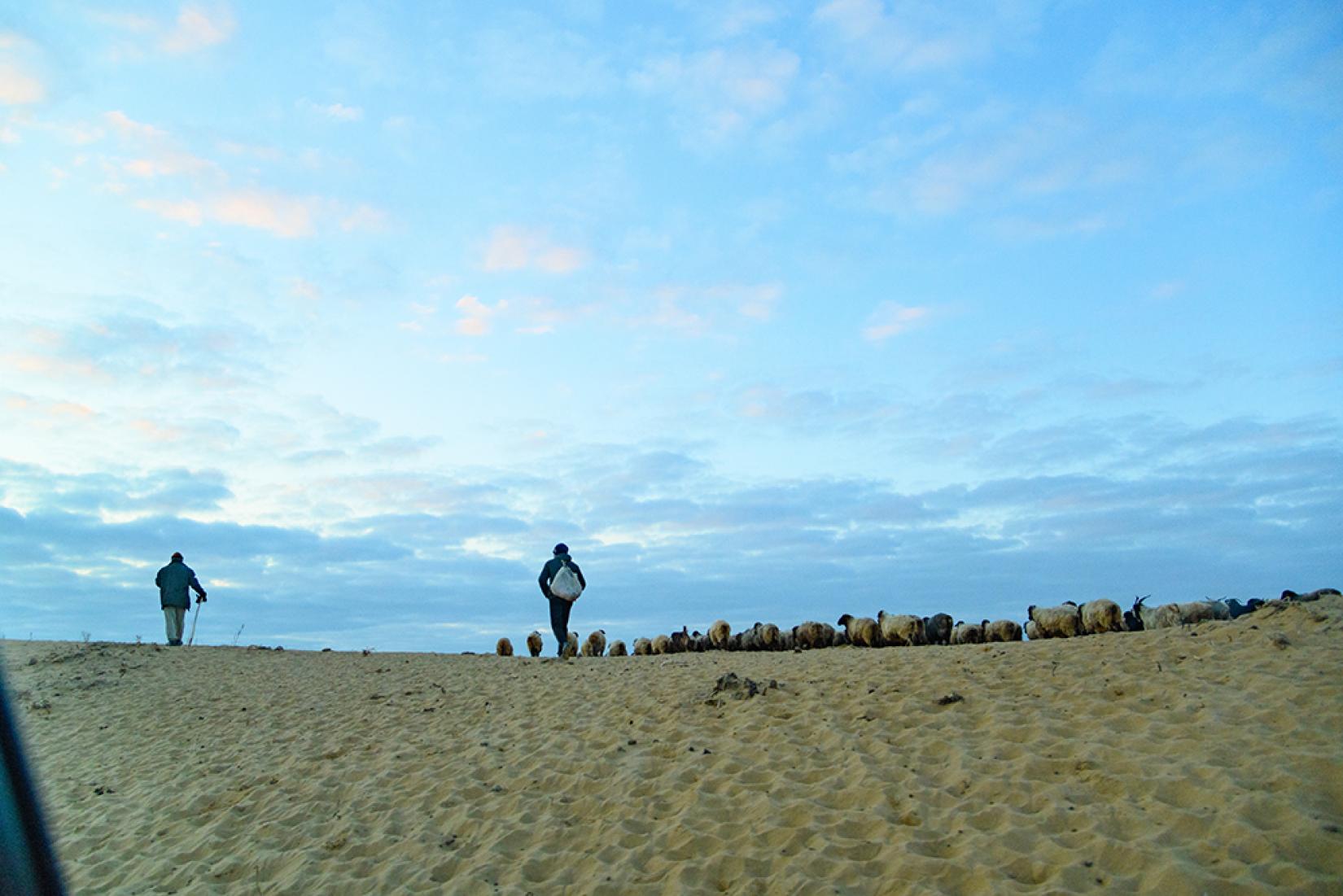
The ultimate plan for Esenaman, is to transform it in such a way that it becomes more than a watering spot for livestock, and can serve as an oasis for weary shepherds and farmers in search of a rest. Esenaman has seen its fair share of solitude and isolation, it is now ready to welcome life back.
UNDP/GEF’s project to support climate-resilient jobs and the EU-funded “Central Asia Nexus Dialogue Project” have joined forces to introduce innovative technologies to increase adaptive capacity at Esenaman.





